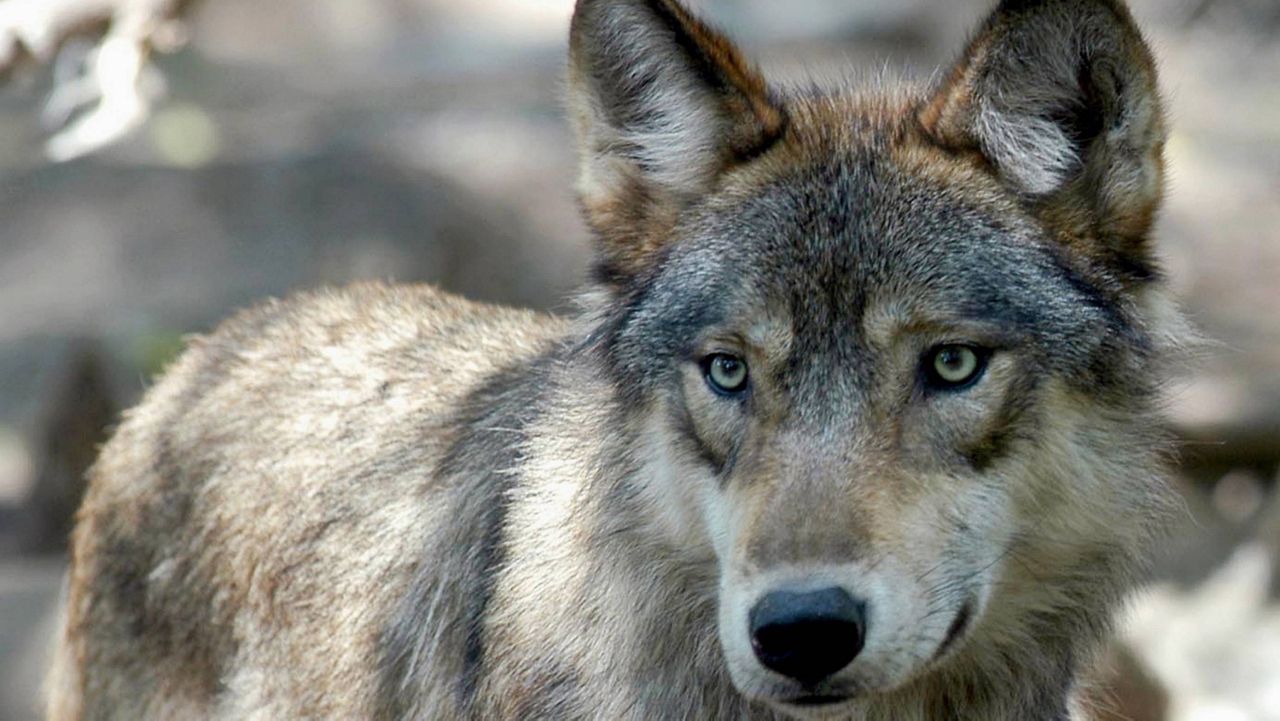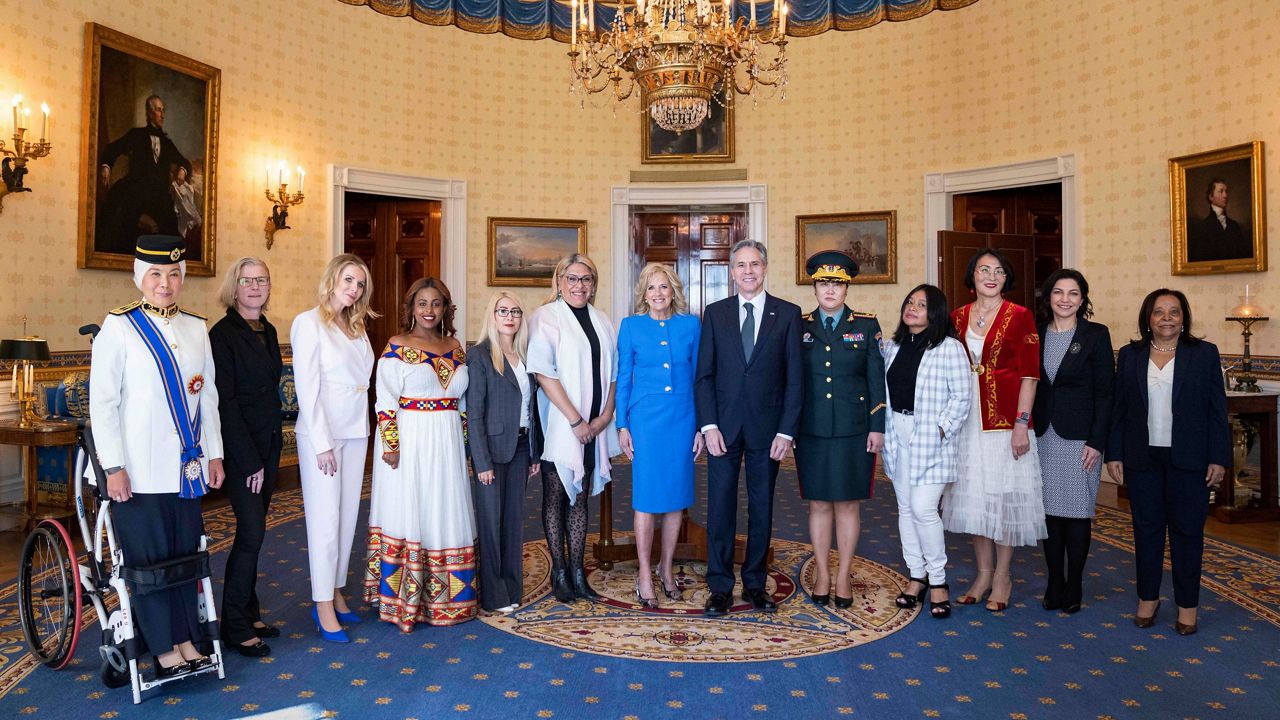The U.S. Fish and Wildlife Service says it’s taking another look at whether gray wolves belong on the endangered species list.
What You Need To Know
- The U.S. Fish and Wildlife Service said Wednesday it’s taking another look at whether gray wolves belong on the endangered species list
- The announcement comes in response to two petitions asking the federal agency to restore protections for the animal, at minimum, in Montana, Idaho, Wyoming, Oregon and portions of Washington and Utah
- The Fish and Wildlife Service said it found that the petitioners presented “substantial information that potential increases in human-caused mortality may pose a threat to the gray wolf in the western U.S.”
- The groups behind the petitions say that states have enacted “anti-wolf” policies that present a “real potential” to destroy wolf populations
The announcement Wednesday comes in response to two petitions, filed earlier this year by dozens of organizations, asking the federal agency to restore protections for the animal, at minimum, in Montana, Idaho, Wyoming, Oregon and portions of Washington and Utah — and potentially even reaching into California, Colorado, Nevada and Arizona.
The Fish and Wildlife Service said it found that the petitioners presented “substantial information that potential increases in human-caused mortality may pose a threat to the gray wolf in the western U.S.”
The agency said it is launching a “90-day finding” — a formal evaluation of the claims made in the petitions. The next steps would be an in-depth, yearlong review and rulemaking process, which would include public comments.
The announcement came on the same day that dozens of Native American groups sent a letter to Interior Secretary Deb Haaland asking her to act quickly on their emergency petition to place the wolf back on the government list of endangered or threatened species. They also asked Haaland, a member of Laguna Pueblo in New Mexico and the first Native American to lead a Cabinet agency, to relist the wolf on an emergency basis for 240 days, ensuring immediate protection.
The Fish and Wildlife Service, however, declined to restore immediate protections.
The groups say that states have enacted “anti-wolf” policies that present a “real potential” to destroy wolf populations.
The letter notes that wolves play a key role for many Indian tribes’ cultures and accuses the federal government of failing to listen to their concerns about removing the wolf from the endangered species list in January.
“Had either the Trump or Biden Administrations consulted tribal nations, as treaty and trust responsibilities require, they would have heard that as a sacred creature, the wolf is an integral part of the land-based identity that shapes our communities, beliefs, customs and traditions,” the letter said. “The land, and all that it contains, is our temple.”
Wolves were exterminated across most of the U.S. by the 1930s under government-sponsored poisoning and trapping campaigns. They were reintroduced from Canada into the Northern Rockies in the 1990s and expanded over the past two decades into parts of Oregon, Washington and California.
Wolves across most of the contiguous United States were stripped of federal Endangered Species Act protections in the final days of the Trump administration. In August, the Biden administration appeared to be sticking with that decision when it asked a federal judge in California to reject a lawsuit from wildlife advocates that sought to restore protections.
States took over wolf management from the federal government in the Northern Rockies over the last decade, and in the rest of the lower 48 states in January.
After protections were lifted there, Wisconsin moved quickly to reduce its wolf numbers. A pro-hunting group with close ties to conservative Republicans won a court order that allowed hunters — some using hounds — to kill 218 wolves in the state in four days.
Among the measures approved this year in Idaho, which has an estimated 1,500 wolves, was a law that provided money for the state to hire private contractors to kill the animals. The law also allows hunters to use night-vision equipment, chase wolves on snowmobiles or ATVs and shoot them from helicopters. It authorizes year-round wolf trapping on private property.
In Montana, state wildlife authorities last month approved a harvest quota of 450 wolves, about 40% of the population. Previously-outlawed killing methods can now be used, including snaring, baiting and night hunting for wolves. Trapping seasons were lengthened, and each hunter or trapper can now take up to 10 animals.
Even before the changes, Montana wildlife officials expected wolf numbers in the state to drop from around 1,150 animals to 950 or fewer, following a particularly successful hunting season over the past year.
In a statement to Spectrum News, the Western Watersheds Project, which wrote one of the two petitions, said it was “gratified” that the Fish and Wildlife Service is reconsidering restoring protections for gray wolves but is disappointed the agency is not taking immediate action.
“Aggressive anti-wolf state laws and regulations in Montana, Idaho, and Wyoming place wolves at risk of extinction in these states, and wolf populations remain tenuous (or absent) in other western states within their historic range,” the group said. “Wolves deserve immediate protection, today, to prevent further human depredations.
“While it is disappointing that the Service has decided not to implement the protections of the Endangered Species Act immediately on an emergency basis, as requested under a previous emergency listing petition, we expect that a thorough review of the best available science will show definitively that the gray wolf must be protected under the Endangered Species Act.”
Montana Gov. Greg Gianforte tweeted Wednesday that the federal government should back off when it comes to the wolves.
“Montana has been effectively managing our wolf population for years, and we don’t need Washington coming in and second guessing our science-based approach,” he said.






)

